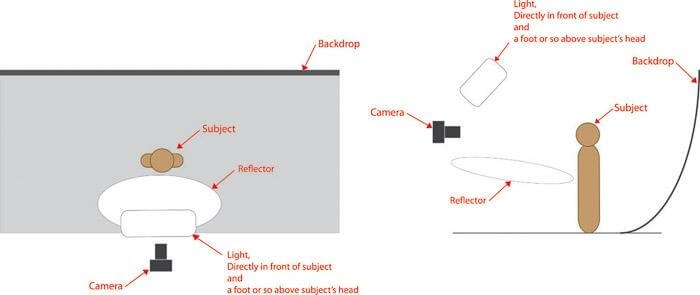Lighting techniques are the heart of great photography and cinematography. Knowing the fundamentals and learning each lighting pattern will give you more control and intention over your shots. Butterfly lighting is fundamental to portrait photography. Not only is it one of the most flattering lighting patterns, it is also extremely easy to set up. So, what is butterfly lighting and how can you achieve it? Let’s get into it.
What is butterfly lighting
First, let’s define butterfly lighting
If you want to take dynamic portraits, there are many options of lighting patterns. They all bring their own unique look and narrative value to your image — not every setup tells the same story. Let's define butterfly lighting quickly and then we'll move onto the setups and its unique properties.
Butterfly lighting DEFINITION
What is butterfly lighting?
Butterfly lighting is a lighting pattern used in portrait photography where the key light is placed above and pointing down on the subject’s face. This creates a dramatic shadow under the nose and chin that looks like a butterfly. It's also called 'Paramount lighting,' named for the Hollywood studio and how they lit their most glamorous and beautiful actresses.
What do you need to capture butterfly lighting?
- A key light
- Flashes and triggers
- Modifiers
- Reflector
Butterfly lighting is perfect for portrait photography. It is one of the most flattering lighting techniques for sculpting facial features. Here's a quick tutorial on butterfly lighting photography and how it works.
Lighting techniques • Butterfly lighting photography
History of Butterfly Lighting
Butterfly lighting dates back to some of the earliest glamour shots. Specifically, Marlene Dietrich, a German silent film actress, who became a Hollywood star in the 1930s, was presented on film in a way that gave this look its name.

Butterfly Lighting Photography • Butterfly shape just under the nose
She came to California with director Josef von Sternberg, who lit her in his films with what is known today as butterfly lighting.
He would position the key light above her, where a butterfly-shaped shadow would appear just below her nose. With this lighting, her cheekbones and facial structure became more prominent.
It soon became a Hollywood-must for lighting.
Butterfly Lighting Setup
How to capture butterfly lighting
Butterfly lighting setups are simple. In its purest form, it's a single source (key light) directly in line with the subject's face and the camera. If the shadows are a little too deep, a reflector can be placed below the subject to bounce light back up into the face.
Here's a tutorial on this setup, along with other light patterns for comparison.
What is butterfly lighting? • Quick Setup Tutorial
Like flat lighting, where the key light is directed right at the subject’s face, butterfly lighting places the light at an angle just above the subject. The light created softens the face and creates shadows under the nose and chin.

Butterfly lighting photography setup
You might use a reflector below as a fill light for the chin area. Reflectors are great ways to balance light.
During the shoot, you or a crew member can hold the reflector, or you can have the subject hold it. Mess around with it a bit. A benefit of reflectors is that you can capture beautiful catchlights in the subject’s eyes by adjusting the reflector.
Related Posts
What You Need for Butterfly lighting setup?
What should be in your camera bag?
Because of its simple setup, you won’t need any fancy gear or equipment to pull this off. Here's a quick list of what to include in your gear kit.
Cameras and Lenses
Obviously, you’ll need a camera with an appropriate lens for shooting portraits. No lens wider than 50mm, and you can use any mirrorless or DSLR camera. iPhone even has a fairly suitable portrait mode on its latest models.
You can also use a telephoto lens for portraits, as long as the space allows you to move back and focus.
Flash and Trigger
Ensure your camera is compatible with the flashes and triggers you buy.
You can get triggers to wirelessly set your flash off. This allows you to position your flash wherever you’d like to get the desired lighting effect.
Modifier
If you’re using a flash, you can add a modifier as well. Modifiers will help diffuse the light. Common ones are softboxes or even umbrellas.
Reflector
Reflectors will help you balance your light. Once your key light and modifier are all set, you may still experience shadows under your mode’s chin. Use the reflector under and angled towards their face, in order to soften that shadow.
Butterfly lighting is one of the most flattering lighting patterns. And probably the easiest one to pull off. If you want to explore more patterns, keep reading!
UP NEXT
Rembrandt lighting explained
Learning to light is the basis for great photography and cinematography. Knowing how and when to use certain lighting patterns with intention can help you level up from a beginner to an enthusiast and beyond. Let’s go deeper into another pattern, Rembrandt lighting, and how it adds more dramatic shadows and depth to your portraits.
Up Next: Rembrandt lighting →
Share your vision with elegant shot lists and storyboards.
Create robust and customizable shot lists. Upload images to make storyboards and slideshows.
